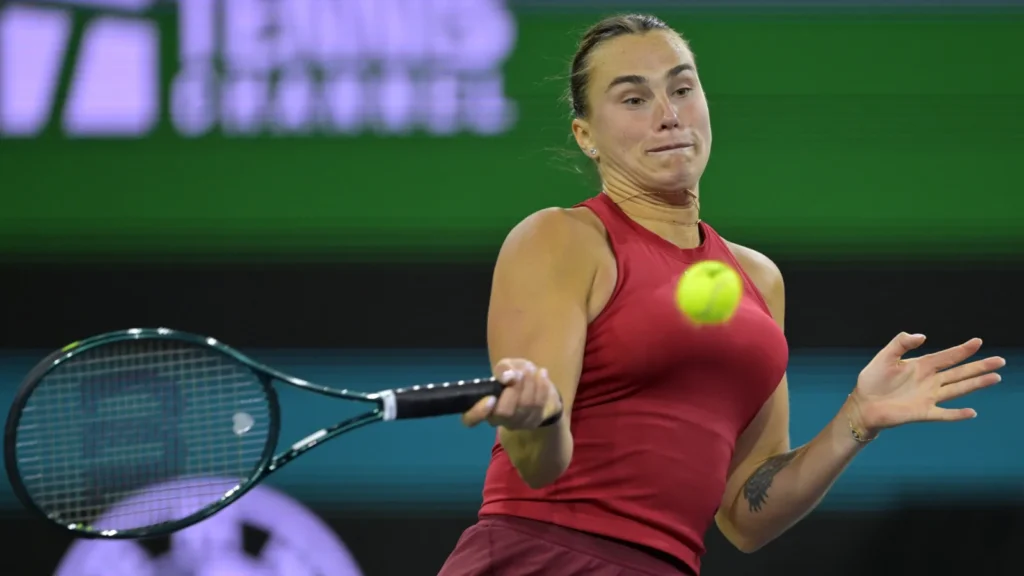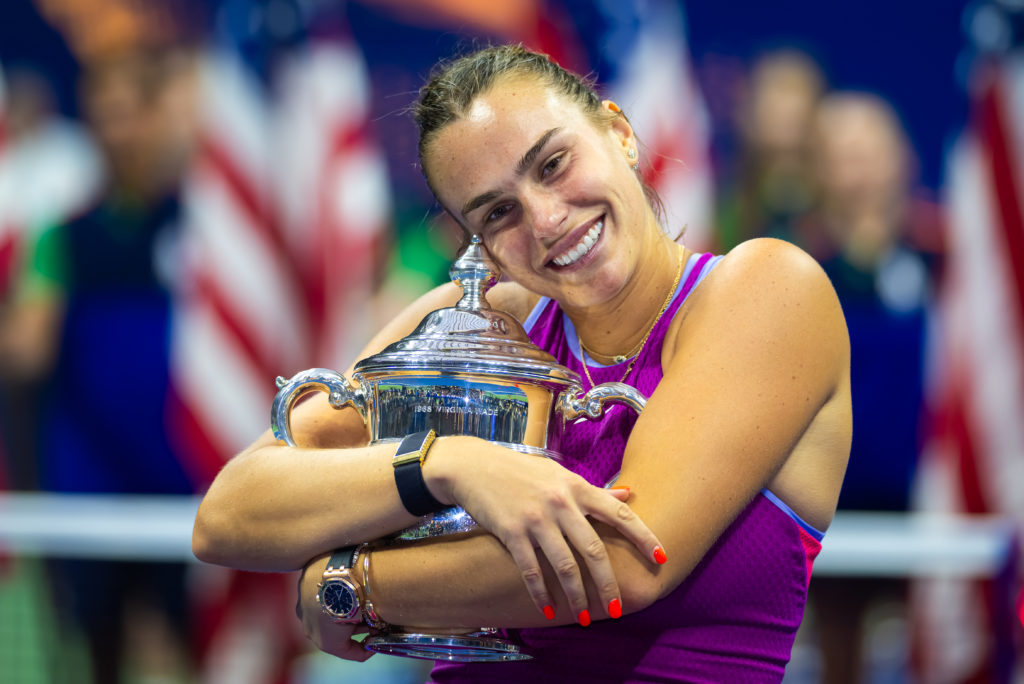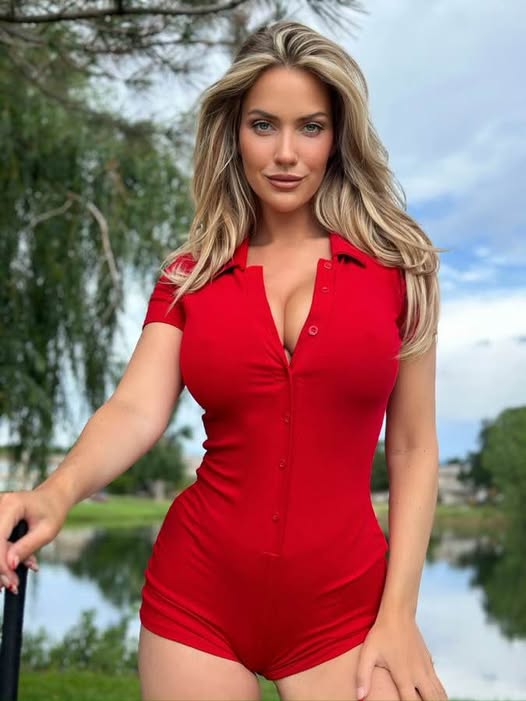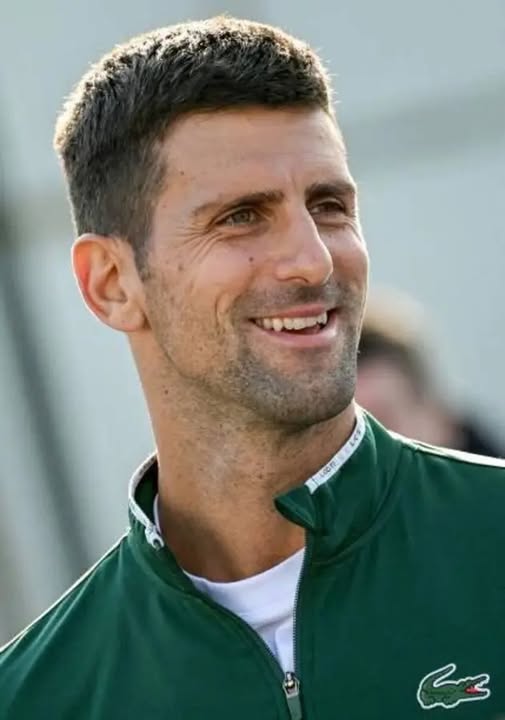When you’re one of the fiercest competitors on the WTA Tour, questions about legacy, ambition, and surface preferences are never far behind. Aryna Sabalenka, the two-time Australian Open champion and current world No. 2, has recently opened up about which of the remaining Grand Slams she believes would be the hardest to win—Roland Garros or Wimbledon.
Her answer was both surprising and revealing.
In an era where power baseline play dominates, and players constantly adapt to every surface, Sabalenka’s choice offered fans a glimpse into not only her mindset but also the challenges that top players face when switching between the slow grind of red clay and the quick precision of grass.
Let’s unpack what she said, what it means for her career trajectory, and how this insight might shape her 2025 season.

Sabalenka’s Candid Take: Roland Garros Is the Toughest
When asked recently in an interview to weigh in on which Grand Slam—Roland Garros or Wimbledon—would be more difficult for her to conquer, Aryna Sabalenka didn’t hesitate. “Roland Garros,” she answered, “without question.”
Her reasoning? Clay courts don’t naturally suit her explosive, aggressive style of play. While she has made great strides on the surface, the elements that make her so dangerous—powerful first serves, punishing groundstrokes, and aggressive shot-making—often get neutralized by the slower pace and high bounce of clay.
“On clay, you have to be more patient,” she explained. “You can’t finish the point in two or three shots. You need to construct more, move better, and just stay in the rally longer than I’m used to.”
It’s a fascinating admission from a player known for her relentless intensity and fight on court.
Why Roland Garros Pushes Sabalenka to Her Limits
Though Sabalenka has improved on clay—reaching the semifinals of Roland Garros in 2023 and 2024—the grind of Paris has remained a steep mountain to climb. Her progress has been admirable, but she hasn’t yet hoisted the trophy at Court Philippe-Chatrier.
The challenges are multi-faceted:
- Physical Demand: Clay matches often last longer and demand endurance. For a high-octane player like Sabalenka, that means adjusting her rhythm and shot selection.
- Slide Mastery: Movement is critical on clay. While Aryna has developed her sliding skills, it’s still not as instinctive for her as it is for players who grew up on the surface.
- Shot Tolerance: Point construction matters more than sheer force. Sabalenka has had to learn patience on clay, which doesn’t always come naturally to a power player.
Her honesty about these hurdles shows self-awareness—a trait that will no doubt help her evolve further.
Wimbledon: Surprisingly More Comfortable
Sabalenka also explained why Wimbledon feels more within her grasp—despite the pressure and prestige that come with winning on the grass of the All England Club.
“I feel like grass rewards aggressive play,” she said. “The serve, the first shot, it really works for me there. I can attack early, take the ball quick, and just play my natural game.”
She has a point. The surface is faster, and her serve becomes an even deadlier weapon. Her results back it up: in 2021 and 2023, she made deep runs at Wimbledon, with a semifinal appearance in 2023 and another in 2024, narrowly losing to the eventual champion.
There’s a freedom she feels on grass, and you can see it in her body language—less grinding, more attacking. Her powerful first-strike tennis feels more at home on the lush green than the red dirt.
Mindset Shift: From Clay Doubts to Contender
What’s compelling about Sabalenka’s journey is how open she’s been about her evolution. In earlier years, she would frequently express frustration with clay. But something has shifted in the past two seasons. Her improved footwork, heavier topspin, and smarter shot patterns have helped her hang with the best on the surface.
Still, she remains her own toughest critic.
“I don’t want to say I hate clay,” she joked during the interview, “but let’s just say… it’s complicated.”
This kind of vulnerability resonates with fans. In a sport where mental toughness is often hidden behind stoic expressions, Sabalenka’s authenticity is a breath of fresh air. And it makes her every triumph feel earned.
What This Means for Her 2025 Season
With the clay season underway and Roland Garros looming, all eyes are on Sabalenka to see if she can take that next step in Paris. She has the game. She has the experience. What remains is putting it all together under the unique pressure of Grand Slam tennis.
Her revelation also adds intrigue to Wimbledon. If she sees it as more accessible, might we see her go all-in for the grass season this year? With players like Iga Świątek dominating clay and Elena Rybakina comfortable on grass, the race for a non-Hard Court Slam is wide open.
And Sabalenka knows it.
Sabalenka’s Bigger Picture: A Career Defined by Growth
Aryna Sabalenka’s candid take on her toughest Slam isn’t just about surfaces—it’s about growth. Her career arc has been defined by adaptation. From the early days when double faults plagued her game to now being one of the most feared players on the planet, her story is about resilience and reinvention.
In 2023, she broke through with her maiden Slam in Australia. In 2024, she repeated the feat with a second title Down Under. Now, as the only remaining goals on her Grand Slam checklist are Roland Garros and Wimbledon, the stakes are high—but so is her belief.
And that belief is something she’s earned, not inherited.
The Social Spark: Why Fans Are Loving This Version of Aryna
On social media, fans have been buzzing about Sabalenka’s comments. Many admire her honesty in admitting her discomfort on clay while still chasing success on it. Others love her energy and spirit—whether it’s fist-pumping after a hard-fought point or smiling wide in press conferences.
In a tennis landscape that sometimes feels too polished, Sabalenka’s raw intensity and unfiltered honesty are a hit.
“She’s just real,” one fan tweeted. “No pretense, no PR spin. Just pure athlete energy and heart.”
That authenticity is what sets Sabalenka apart—and it’s why her quest for the Roland Garros crown is so compelling.

Final Serve: Can She Conquer the Clay?
Aryna Sabalenka has set the stage. She’s acknowledged the challenge. And now, the world will watch to see if she can overcome it.
Will 2025 be the year she breaks through at Roland Garros, the Slam she deems the most difficult? Or will she storm the grass of Wimbledon and claim the crown that feels just within her reach?
Either way, one thing is clear: Sabalenka’s journey is far from over. And if her recent performances and self-awareness are anything to go by, the tennis world should be ready for fireworks.
Her Grand Slam destiny might be split between clay and grass—but her heart is all in.
What’s your take?
Do you think Sabalenka will win Roland Garros before Wimbledon? Or is the grass greener for the Belarusian star? Let us know in the comments and join the conversation on social.
Don’t forget to share this post if you’re riding the Sabalenka rollercoaster like the rest of us. Her story is just getting started.
#ArynaSabalenka #RolandGarros #Wimbledon #WTA2025 #TennisTalk #GrandSlamSeason


